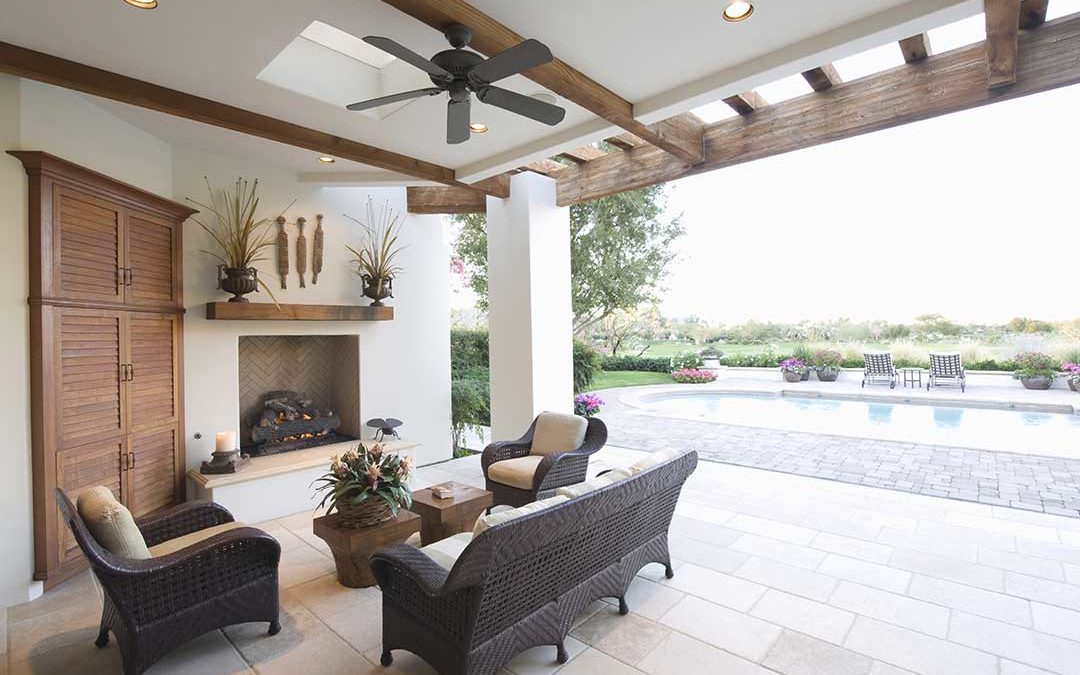You’ve successfully chosen flooring to fit your interior décor. But what about the outside? Whether you have a patio, a deck, or an indoor/outdoor living space, there’s plenty of room for both fun and functionality in your design. Here are a few outdoor flooring options to consider.
• Composite Wood. Wood flooring can lend your patio or deck a cozy, rustic feel. If you have an indoor/outdoor space that’s generally protected from the elements, you can use real wood in your floor. Otherwise, composite is the way to go for outdoor areas. Made from a combination of wood and plastic, composite wood is water resistant and fire resistant, so it will last longer. It’s also cheaper than regular wood, while providing the same rustic aesthetic.
• Ceramic Tile. Few things say luxury and elegance in your outdoor décor like a beautiful stone floor. Unfortunately, stone is also very expensive. So much so that most stone patios you see nowadays are actually ceramic tile. Porcelain can be made to imitate the look of stone, and has the same durability, but at a significantly lower cost. There are drawbacks, though. Tile won’t stand up to the elements as well as stone can, and it can become damaged by water and cold over time. There’s also a risk of slipping, especially when wet, and a fall onto hard tile is likely to cause injury.
• Brick. Brick flooring looks great around the barbecue pit, or the pool. It can be expensive to install, but its durability makes it cheaper in the long run. Once your brick floor is in place, it will last virtually forever, so you don’t have to spend money on replacements or repairs. It’s also easy to clean, and environmentally friendly—brick is made from all natural materials. Brick is not without drawbacks, though. While it won’t damage easily, brick can become uneven over time, and difficult to walk on. It’s also porous and prone to retaining water, which can lead to mold and mildew, if you’re not careful.
• Concrete. Concrete has many of the same advantages of brick, such as its incredible durability and easy maintenance. And it doesn’t carry with it the issues of unevenness, or water retention. But aesthetically, concrete is on the low end of the scale. It’s not as interesting to look at as bricks, tiles, or even wood. If you do want to take steps to make your concrete look more appealing, it will cost a lot more. Plus, you end up sacrificing durability for aesthetics, as concrete that’s been dressed up to look nice is also more susceptible to chipping and peeling.
• Rubber. It may seem unconventional, but rubber has a lot of potential in outdoor flooring. It’s one of the cheapest types of flooring to buy and install, it’s resistant to water and the elements, and it can be made to look like any of the types of flooring listed above. It’s also softer than brick or concrete, as well as slip resistant, minimizing the likelihood of injury from a fall. And it’s versatile enough that you can use it on just a small section of your outdoor area, if you want. Maybe there’s a small patch of grass in the yard, where you want to put the barbecue, or a few potted plants. You can lay a strip of rubber flooring on that patch a lot easier than it would be to pave it over with concrete, brick, or tile, and furnish that strip however you want. The major con is that you get what you pay for. Rubber’s a lot cheaper than these other types of flooring, but it’s not as durable, and more prone to damage over time.
These are just a few of the outdoor flooring options you can use to spice up the décor of your patio or indoor/outdoor living area. Talk to a flooring expert about your specific flooring needs, your budget, and the aesthetic you’re looking for, and they’ll help you find the outdoor flooring solution that’s best for your home.



